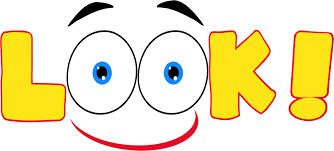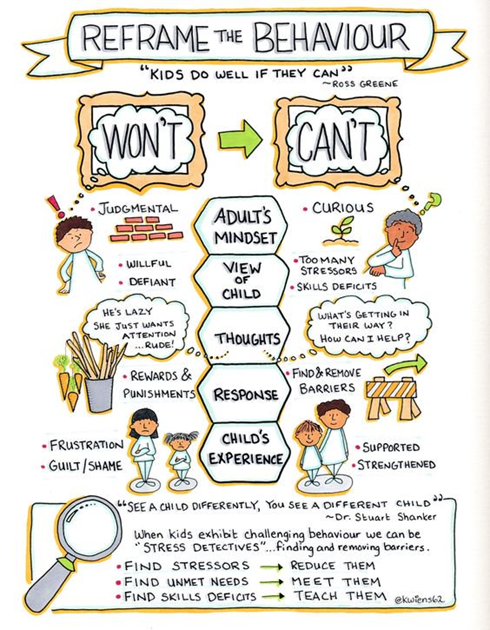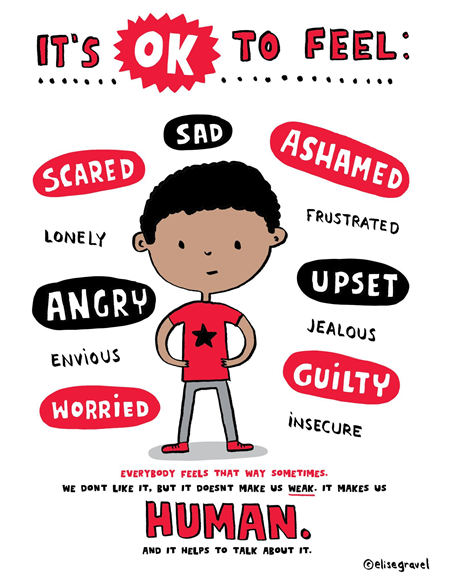THIS WEEK’S EVENTS
Monday, September 17 — Constitution Day — enter your lessons in the link below!
Metzger to Riley in AM
DIBELS Wrapups this week
Moonlight Yoga 7:00 p.m.
Tuesday, September 18 — Metzger to RESA in AM
Young 5s PBIS Stations
Fire Drill in PM
Constitution Day Presentation 1st Grade 2:45 p.m.
Wednesday, September 19 — Author Assembly: Denise Brennan-Nelson 9:15-10:05 Y5, K & 1st 10:15-11:05 2nd & 3rd 1:15-2:15 4th & 5th
Thursday, September 20 — IEP Meetings in Office Conference Room
Friday, September 21 — Band Instrument Fitting Day
Cub Scout Classroom Visits begin at 10:00 a.m.
Run Club signup closes at 3:30 p.m.
LOOKING AHEAD
9/24 — NWEA at Bennie begins — signup calendar coming
Run Club Begins! 3:30-4:00 p.m. Students must be registered online by 9/21!!
Band Instrument Rental Night 6:00 p.m.
9/25 — Smile! Picture Day
9/27 — Lockdown Drill
9/28 — Homecoming Parade 4:00 p.m. Cars must be moved from west lot immediately after school!
10/1 — Run Club 3:30-4:00 p.m.
10/3 — Walk or Bike to School Day
10/4 — PTA Meeting 6:30 p.m.
10/5 — 1/2 Day 11:30 a.m. Dismissal
“First Friday” at Megan’s House!

GETTING THIS PARTY STARTED
Friends, it has been a joy watching you get another year off to a great start! You persevered through sweaty temperatures and have modeled the flexibility and cooperation that we expect in our students each day.
I see you collaborating with your colleagues, brainstorming ideas about how to make the best of challenging situations, trying new things, and supporting one another. Our school is a better place because you are in it. Thank you for making Bennie the best place to work, learn, and grow!

FIRST FRIDAY TRADITION
Thank you to Maureen for hosting the first of what is now set up to continue as Bennie “First Fridays”! It was a lovely opportunity to kick back, relax, and laugh at her home on September 7.
Megan has offered to host October’s “First Friday” event! Mark your calendar now for Friday, October 5! Details to come!

CONSTITUTION DAY
Please follow the link below to enter your lesson plans for Constitution Day 2018! Although you may be teaching lessons all week, the law requires at least some part of the lesson to take place ON the actual date (9/17).
https://docs.google.com/forms/d/e/1FAIpQLSdZaAXv6TNhy_G68Tznm5K-Qt9pyf2nJzaita353-hM3ViH3Q/viewform
Why do I Have to Teach Constitution Day?
This Congressional initiative is authorized by Section 111 of Division J of Pub. L. 108 of the Consolidated Appropriations Act, 2005, Dec. 8, 2004; 118 Stat. 2809, 3344Department.. Section 111(b) states each educational institution that receives Federal funds for a fiscal year shall hold an educational program on the United States Constitution on September 17 of such year for the students served by the educational institution For purposes of the Department implementation of this requirement educational institutions includes but is not limited to local educational agencies institutions of higher education receiving Federal funding from the Department.
(Educational institutions receiving Federal funds from the U.S. Department of Education must implement the statutory requirement pertaining to the United States Constitution, on a date designated by statute as Constitution Day and Citizenship Day. Section 111 requires that Constitution Day be held on September 17 of each year, commemorating the September 17, 1787 signing of the Constitution. However, when September 17 falls on a Saturday, Sunday, or holiday, Constitution Day shall be held during the preceding or following week.)
Teaching Resources for Constitution Day 2018<http://www.resa.net/curriculum/curriculum/socialstudies/highlights/constitutionday/webresources/>
* Click on the Teaching Resources link (above) to find lesson plans and resources sorted by elementary, middle, and high school level. Please contact David Hales, halesd@resa.net<mailto:halesd@resa.net> if you use other resources that you would like to have posted.

REMINDER
Just a reminder to please send your funds to Michelle for the following:
Social Committee — $25 Full Time/$15 Part Time
Jeans/Scholarship — $40 Full Time/$20 Part Time
Water — $17
This is a total of $82 for Full Time staff and $52 for Part Time staff if you are participating in the water. You can make a check out to Bennie if that is most convenient.
The Social Committee does support ALL staff members, so please send in your funds for this, as well as for the Jeans/Scholarship. We enjoy lots of jeans days at Bennie. This small amount can make a big difference for a former Bobcat. Last year, we did not have enough to fund a scholarship because the amount collected was so low. 🙁

YOUR ONE WORD
The process of choosing, owning, and sharing our “one word” has been a powerful experience so far this year. If you have not yet shared your word card with me, please consider doing so. The intent is to have ALL of our staff members represented through their one word. Together, all of our words combine as a powerful force for good. I have truly enjoyed reading your words and the intent behind why you chose them.
The next step in the “one word” project is to make our words visible and share them with our students. Check out the visual below for the direction this is headed next!
The second photo is a partial representation of the words chosen by our staff. More have been added since this photo was taken!
The third photo was shared with me by Lisa Smalley at Arno. She had her students identify their “one word” and they made a board from the words. How awesome and motivating is that?!



|
|
LUNCH PROCEDURES
Thank you for supporting our lunch staff by remembering the following procedures:
- Please do not send your students to recess until the lunch aide arrives at your class. This will give her the opportunity to review procedures and/or discuss games or playground updates.
- Please arrive on time to the cafeteria. Remind your class to STAY SEATED until you arrive at their table, check it for cleanliness, and ask them to line up. Please go directly to your class’s tables rather than standing near the door or in your lineup spot.
- Please remind your students to turn their voices off when they see you arrive in the cafeteria so the end of our lunch hour can be a peaceful return to class.
- Voices should be off at all times in the hallways.

ASSEMBLY PROCEDURES
I think the consensus is that the ACE Award PBIS assembly has promise! I thought the students did a pretty good job at our first assembly of the year! We will work on tightening up some of the procedures from a time perspective. Please review the voice level procedures for students. We want this to become habit, and for assemblies to be an enjoyable and peaceful experience for students!
PTA MEMBERSHIP


SAFE SCHOOLS
For those employees required to complete Safe Schools Training, the system is now open and available to complete for the 2018-19 school year. The modules need to be completed by October 31, 2018. Please email me if you have any issues.

CLASS DOJO
 |
|

TRAUMA-INFORMED ARTICLE
DisruptED TV Magazine
If Students Could Behave, They Would!
By Rebecca Coda

Each day in America children are impacted by abuse or neglect, die by suicide, witness violent crimes, experience family separation by divorce, are born into poverty, are placed in group and foster homes, face debilitating health issue of self or family members and even are displaced from their home country as refugees. All students arrive in our classrooms with an expectation to academically climb Bloom’s Taxonomy yet many of our students haven’t even met Maslow’s basic hierarchy of needs. A deficiency in appropriate social and emotional development in our students in America is morphing at such a rate that an educational disruption is vital for redefining the purpose of schools altogether. Social emotional learning is not merely looking through the lens of mental health needs, but rather the developmental stages that students must adequately progress through socially, emotionally and academically to live a good life. We must come to a therapeutic understanding that if our students could behave most of the time, then they would. Especially in our classrooms!
“Research on childhood trauma shows that everyday relationships with teachers, caregivers, and friends often have the most restorative effect.”
- Thriving Journal: Brendtro, Long, Fecser
Social Emotional Learning Leads to Living a Good Life

As educators we notice that poverty, anxiety and depression are all on the rise and student behavior and safety continue to make headlines. Social emotional learning (SEL) is trending on social media, full issues are dedicated to the topic in our educational journals, and sessions on “students of trauma” are filled beyond capacity at educational conferences. We are hearing and seeing the words, social emotional learning trending like never in the past. In a response to these changing demographics many districts have established SEL initiatives following in the footsteps of this educational trend that is sweeping the nation. Whether supporters of SEL initiatives or not, for many educators, implementing the programs and strategies may not be a choice. SEL is trending and we see anti-anxiety strategies like tapping, fidget tools, self-regulation techniques meditation, yoga and sensory diets all supporting student behavior.
The questions we might consider asking are, do we as educators embrace social emotional learning because SEL is the next trend that is a buzz? Are we scrambling because of student safety, the number of office referrals are increasing or the percentage of students on free and reduced lunch is on the rise? Or is there a deeper humanity driven reason for our pursuit of teaching the whole child?
Recently I spoke with Dr. Erin Raab via Google Hangout after interacting on Twitter for several weeks. She is the co-founder of www.reenvisioned.org and is leading a national movement to redefine the purpose of school. We experienced this magnetic attraction because of our common passion to advocate for student voice and ultimately lead students to success. Throughout our conversation she asked me three very pointed questions that are the foundation of her movement:
1. What makes a good life?
2. What are our shared dreams for our children?
3. What is the role of school in achieving these?
At first, I was a little caught off guard by these questions. Even though I consider myself a social justice warrior for kids advocating for student voice and positive school experiences, her questions drew me in wanting to synthesize her questions with greater thought. Anyone that knows me fully, understands that I am all-in for kids. Her questions stopped me dead in my tracks that day and were difficult for me to answer because I realized I currently had a limited view of my purpose as an educator even though I was “all-in”. I was only looking through my lens of purpose as an educational leader. I realized I was limiting a greater purpose for a positive school experience because I was viewing the ultimate mark of success as a college degree, white picket fence and a cliché version of a successful work life transition. But if you really listen to the voices of the 10,000 students she has interviewed from varying backgrounds, their perception of what makes a good life is not necessarily my own perception of a good life. I experienced a cognitive shift as I now perceive the greatest educational purpose I have is to lead students to a good life. Their version.
Dr. Raab’s questions are the tough questions we must wrestle with and strive to understand as educational leaders. The moment we understand that our role is more vital than any other adult that may be present in their lives is the point that implementing social emotional learning will transform kids! Without understanding this premise of why we must embrace SEL, it could easily become the next fad that comes and goes without standing the test of time. The ultimate human goal is to set restorative measures in place to help students achieve their goals so that they can live THEIR version of a good life and thrive as humans.
We Can Create a Living System Where Children Thrive
As leaders in education we must not only learn the complexity of social emotional learning, but begin creating supports to reach every student. Teaching the whole child gives our role as educators a greater purpose and shared vision for creating an environment where students can thrive. The irony is that a belief in SEL is not enough to make it happen. Being equipped with the knowledge, framework and strategies for serving kids doesn’t come natural. It isn’t taught and as educators we may never have learned these frameworks and strategies unless we were in a clinician setting or took additional coursework that may have applied to another degree. Or are lucky enough to be in an SEL driven school setting dedicated to thriving relationships.
“There’s never been a more chaotic and tenuous time in our nation’s educational story. Learning is the most natural thing human beings do. Yet, it seems the “harder” we work in schools helping our students to acquire the learning they need, the academic performances stay stagnant or lessen. Schools are not machines. Schools are a network of human beings who feel, think, behave, and function within a human system that is alive and never static. Schools are living systems! This system is wired to thrive, even through difficult times.”
— Unwritten, The Story of a Living System, Lori Desautels and Michael McKnight
When we view schools as living systems then we can begin framing a multi-tiered system of support for positively supporting students. If you don’t already have Positive Behavior Interventions and Supports (PBIS) and systems in place you may want to consider the work of Dr. Angel Jannasch-Pennell, CEO and research director of KOI Education. KOI Education offers research, training and services to build the capacity of schools and districts to thrive. Another national trainer and consultant is Kimberli Breen author of Cheick-In, Check-Out. Her professional training videos illustrates key components on how personnel and parents can quickly and effectively support positive behavior throughout the day. I would encourage you to learn more about multi-tiered systems of support (MTSS) and positive behavior interventions and support (PBIS) frameworks if you aren’t already familiar. Understanding a MTSS and PBIS framework is a great place to start in building capacity with a committee of stakeholders to initiate a living system where students thrive.

The intricacies of SEL are interwoven and require leadership and vision with strong system supports in place. The Collaborative for Academic, Social and Emotional Learning (CASEL) is the known clearinghouse for research, evaluating programs, trends and initiatives for all things SEL. This is the first place I would recommend starting your SEL learning journey. Other organizations such as The Wallace Foundation has released NAVIGATING SEL FROM THE INSIDE OUT research findings and resources analyzing the top 25 SEL programs. Jump right in and begin networking with experienced educational leaders learn how to best support the students in your school community that can’t behave right now that can learn to live a thriving good life.
We Can Quadruplicate Our Happy Brain Chemicals
In the meantime, you can start hacking into your happy chemicals! There are four happy chemicals produced by our brains that can positively manifest into positive motivation, productivity and wellbeing. This works for Us and THEM! I must warn you up front so you can be cautious. Hacking these chemicals can produce an immediate positive response that may result in relationships that matter thus creating a trusting learning environment.
One of my favorite infographics I found on The Utopian Life written by Thai Nguyen. He shares simple ways to hack these four brain chemicals:
Dopamine motivates you to take action toward your goals, desires, and needs, and gives you a surge of reinforcing pleasure when achieving them.
Hack #1 Consider breaking down big goals into little pieces so you can create a series of little finish-lines which release dopamine.
Hack #2 Create new goals before achieving your current one. That ensures a consistent pattern for experiencing dopamine.
Serotonin flows when you feel significant or important.
Hack #3 Gratitude practices can help you remind that you’re valued and significant.
Hack #4 Although too much ultraviolet light isn’t good, some daily sun exposure is healthy for boosting your serotonin levels.
Oxytocin creates intimacy, trust, and strengthens relationships.
Hack #5 Often referred to as “the cuddle hormone”, a simple way to keep oxytocin flowing is to give someone a hug.
Hack #6 Giving someone a gift will also cause their oxytocin levels to rise.
Endorphins are released in response to acute pain and stress, to help alleviate anxiety and depression.
Hack #7 Along with exercise, laughter is one of the easiest ways to induce endorphin release.
Hack #8 Keep some scented oils and dark chocolate at your desk for a quick endorphin boost.
Teaching kids to “behave” is much more complicated than punishments and rewards. It is all about creating a living system where students can experience restorative redirection and habits that nurture the whole child. If we want our students to learn to behave then we must meet them where they are and teach them how to thrive and live a good life.
Amazing Leaders, Organizations & Initiatives to Follow
ReEnvisioned: Dr. Erin Raab
Koi Education :Dr. Angel Pannasch-Pennell
Revelations in Education: Lori Desautels
North Star Paths: Kristen Wiens
Centre for Justice & Reconciliation: Restorative Justice








Great article
Looking forward to another First Friday 😊! Love this new Bennie tradition 👍! Thx for getting the party started, Mo.